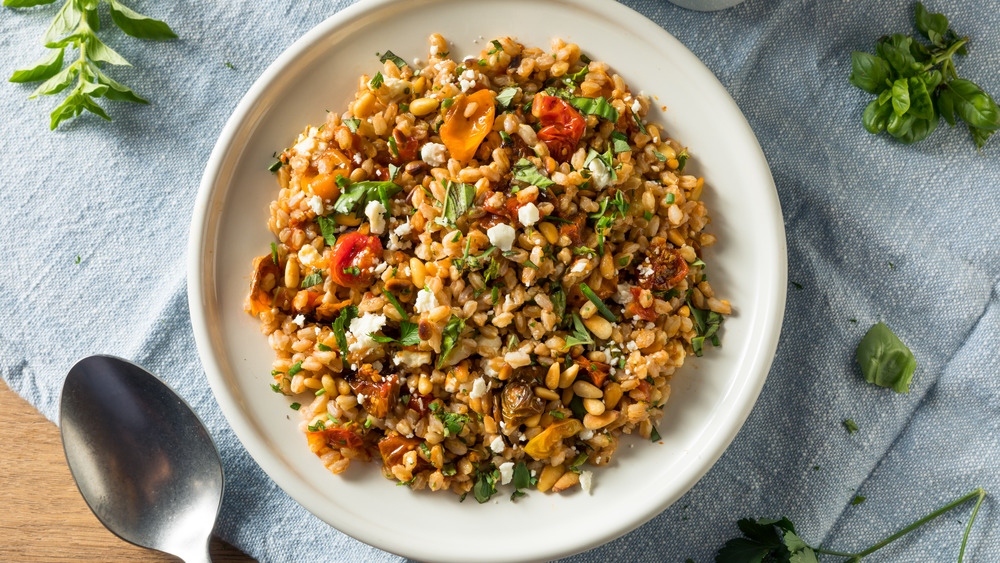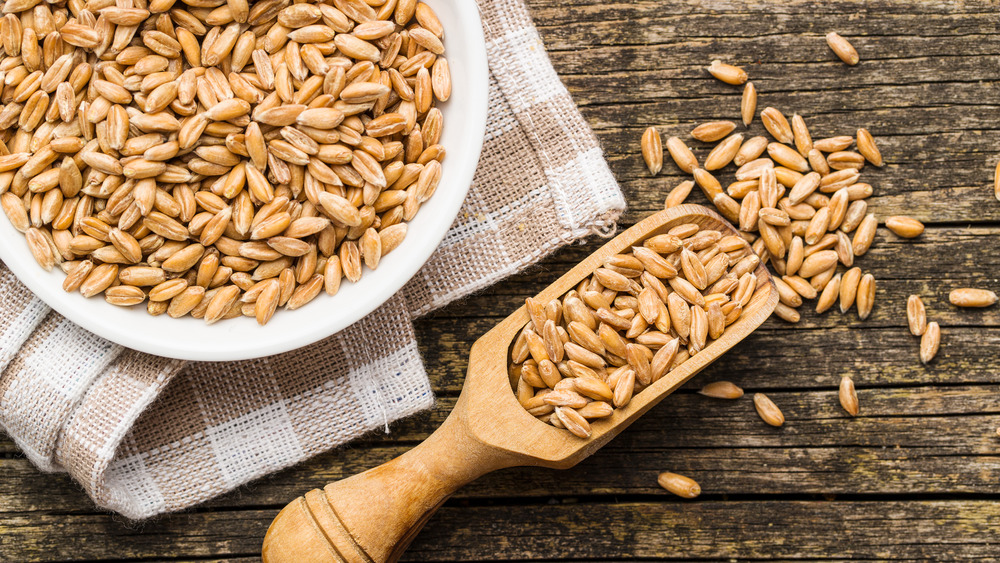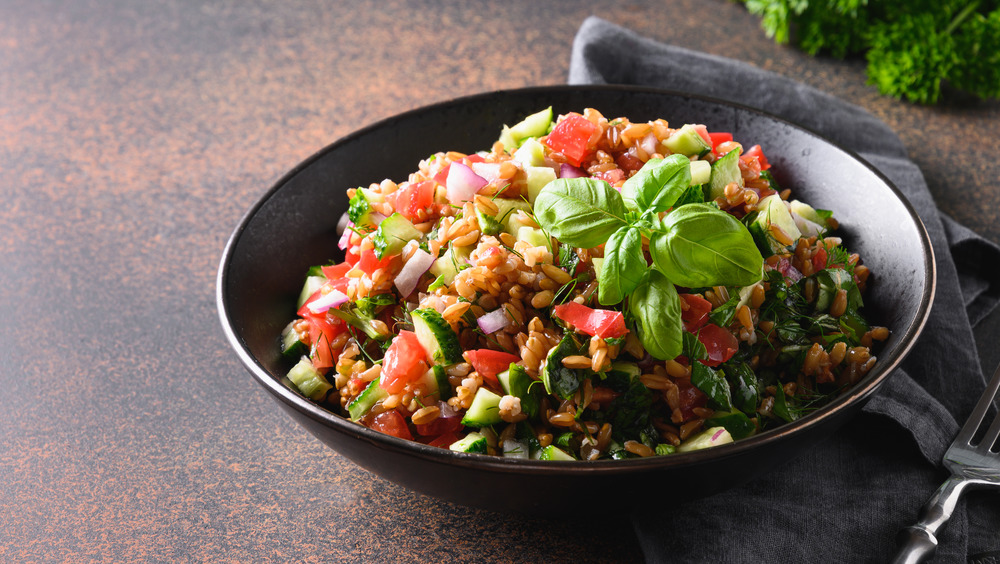You've Been Cooking Farro Wrong This Whole Time
Nothing can fill you up while providing a healthy meal like farro. This grain actually encompasses three types of foods — einkorn, emmer, and spelt — with people typically referring to emmer when they talk about farro (via Healthline). According to Good Housekeeping, this ancient grain packs in seven grams of protein per serving, while serving up more benefits than your typical rice. If you love the idea of eating this healthy but feel lost when it comes to finding the right recipe, look no further than the expertise of Palak Patel, chef at the Institute of Culinary Education.
Thanks to Patel's advice, we can all avoid some common cooking mistakes we face anytime we have to square up with farro in the kitchen. To understand how to approach the grain, we have to understand where it comes from. "Farro belongs to the wheat family and is most popular in Italian cooking," Patel explained. "The grain originates from West Asia. One of the healthiest grains, it's packed with fiber and protein...It has a nutty flavor, a chew, and aromatic smell. This is a sturdy grain and perfect for salads or a healthier risotto. The grains don't stick together and absorb dressing well."
Patel also explained that your cooking instructions will revolve around what type of farro you decide to use. "Whole farro takes approximately 40 minutes, semi-pearled will cook in 30 minutes, and pearled farro cooks in 15 minutes. Stores also have a par cooked farro for quick cooking."
Common misconceptions about cooking farro
Farro offers up a healthy meal, but requires some practice to perfect. Patel believes over or undercooking presents the biggest problems when it comes to working with farro. "The grain is tough and needs a lot of liquid," Patel said. "The partially cooked grains are hard to chew and have a tough exterior. The overcooked grains fluff up and become a touch mushy."
She compared the process with cooking rice, mentioning that the water to grain ratio is fairly similar, save for the fact that farro is a bit denser. "Work within the ratio of 1:3 — one cup farro to three cups water. Cook on the stove top with vegetable broth or water. Boil and then simmer with a cover on until the grains absorb all the water. Keep in mind the texture and how the grain will be used. If it is for salad, then the texture is more important as compared to a stew. Be sure to season the grain with salt when warm for maximum absorption," she says.
For best results, Patel recommends first washing the raw grains, then heating the water with aromatics like garlic, onion, bay leaf, or herbs. From here, add your farro to the pot, stir, and bring everything to a boil. Simmer everything with the lid closed on the pot and season while the farro is still hot.
A healthy ancient grain for all occasions
If you happen to have some farro waiting to be used, there are a wealth of recipes you can try out. "Farro is best used in salads, risottos, [and] soups," Patel said. "You can use farro as a replacement for rice and other high glycemic foods. Farro that's whole has some of the highest fiber amount and nutrients of any grain. Soak it before cooking to make it more digestible."
With a bit of practice and some new recipes, you can master this ancient grain and explore a whole new world of flavor. Don't get intimidated by the preparation of this ingredient — the grain has stuck around for generations for a reason. If you have been searching for a new source of fiber and antioxidants, this grain has you set (via Healthline). Grab some during your next grocery run and try replacing your regular rice with it — with flavors this rich and nutty, it won't let you down.


